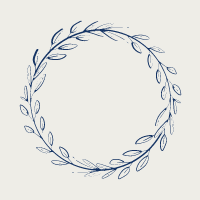Perfume master classes are a unique opportunity for anyone interested in the world of fragrances to discover their senses, learn how to create individual compositions and learn more about the intricacies of the art of perfumery. Such events help participants find their ideal scent by experimenting with different notes and combinations. They attract both beginners and experienced perfume lovers. Organizing master classes requires special attention to detail so that each participant gets pleasure and valuable knowledge. In this article, we will consider how to properly organize a perfume master class so that it becomes an unforgettable event.
Preparation for the master class
Preparation for a master class is the key to its success. The more carefully you think through the details, the more comfortable your participants will be and the higher the likelihood that the event will leave a positive impression.
A successful master class begins with thoughtful preparation. You need to consider several key points:
● Defining the target audience – master classes can be designed for beginners, professionals or groups with different levels of training.
● Choice of Topic – Topics can range from the basics of fragrance creation to advanced perfumery techniques.
● Selection of materials and tools – bottles, pipettes, essential oils, alcohol bases and test strips.
● Creating a presentation and training materials – visual support will help to reveal the theoretical part.
Selecting a venue and atmosphere
The venue plays a key role in how participants perceive the event. The right atmosphere creates comfort and promotes the creative process.
The location of the master class plays a key role in creating a comfortable and creative environment. When choosing a site, consider:
● Room size – the space should be sufficient to comfortably accommodate participants and tables with materials.
● Ventilation – Working with fragrances requires fresh air to avoid odor overload.
● Atmosphere – a cozy, stylish interior will help participants relax and enjoy the process of creating fragrances.
Think through the details: candles, flowers and calm music will create the right mood.
Master class program
To ensure that participants do not lose interest and get the maximum benefit, it is important to think through a competent structure of the master class. The program should include both a theoretical part and a practical immersion in the world of aromas.
The structure of the master class should be clear and consistent. The optimal program includes:
- Greeting and introducing yourself to the participants creates a friendly atmosphere.
- A brief excursion into the history of perfumery – tell interesting stories about famous perfumers and iconic fragrances.
- Teaching the basic rules of fragrance composition – explain the fragrance pyramid: top, middle and base notes.
- Practical part – participants create their own unique compositions under your guidance.
- Feedback – participants share their impressions and exchange ideas.
Selection of aromatic ingredients
Ingredients are the key element of the master class. The quality and variety of components determine not only the pleasure of the process, but also the final result – the created aromas.
The key to a successful master class is the right selection of aromatic ingredients. It is recommended to include:
● Citrus oils – lemon, bergamot, grapefruit for fresh notes.
● Floral essences – lavender, jasmine, rose for soft and delicate accents.
● Woody and resinous notes – sandalwood, cedar, patchouli for depth and durability.
● Exotic spices – cinnamon, cardamom, vanilla to create a warm trail.
A well-thought-out set of ingredients will give participants ample opportunities to experiment and find unique combinations.
Organization of the practical part
The practical part is an opportunity to reveal the creative potential of the participants and let them feel like real perfumers. To ensure that everything goes smoothly, it is important to take into account several nuances.
The practical part is the most exciting and memorable part of the master class. To ensure everything goes smoothly, pay attention to the following points:
● Show an example of fragrance creation – it will be easier for participants to work if they see the process with their own eyes.
● Provide individual kits of tools – pipettes, vials and test strips should be available in sufficient quantities.
● Support participants in the process – answer questions, give advice and correct mistakes.
At the end of the practice, ask the participants to name their fragrances and explain the idea behind their creation.
Completion of the master class and feedback
A good conclusion to a workshop leaves a lasting impression and reinforces the positive experience of the participants. Think about ways to close that will make the event unforgettable.
The final part of the event should leave a pleasant impression. Organize:
● Certificate presentation ceremony – participants will be pleased to receive confirmation of participation.
● Discussion of impressions – provide an opportunity for participants to share emotions and ask questions.
● Photo session – memorable photos will create positive associations with your event.
Invite participants to leave feedback – this will help you improve future workshops.
Organizing perfume master classes requires careful preparation, but the result is worth all the effort. A well-designed program, thoughtful atmosphere, and attentive approach to participants will help make your event not only educational, but also unforgettable. Such master classes inspire people to be creative and open up the amazing world of fragrances to them.
Questions and Answers
Focus on the level of the participants: basic topics are suitable for beginners, and more complex techniques are for experienced connoisseurs.
Bottles, pipettes, essential oils, alcohol bases and test strips are the basis for a successful event.
Use decorative elements such as candles, flowers and pleasant background music to immerse participants in a creative environment.

